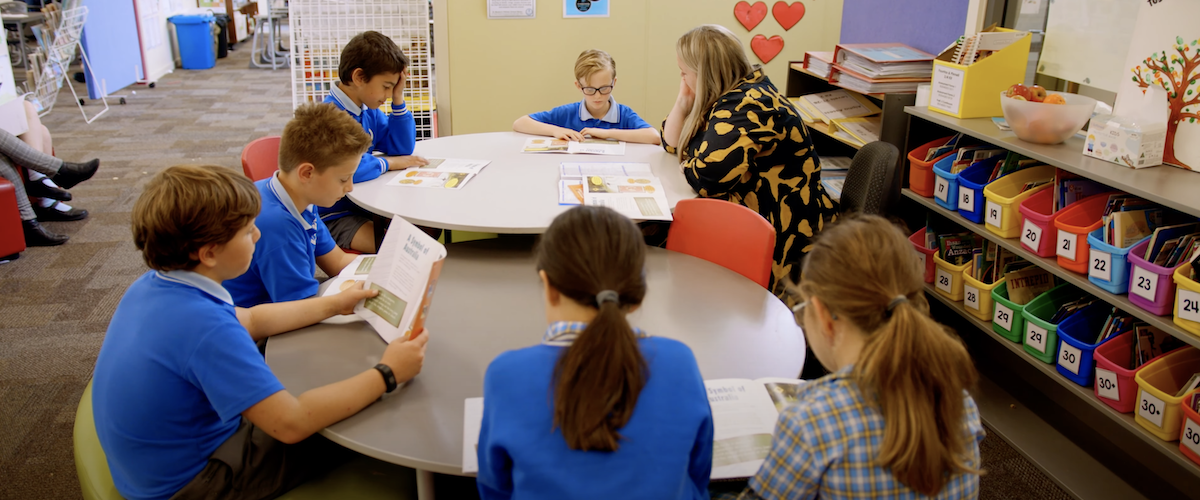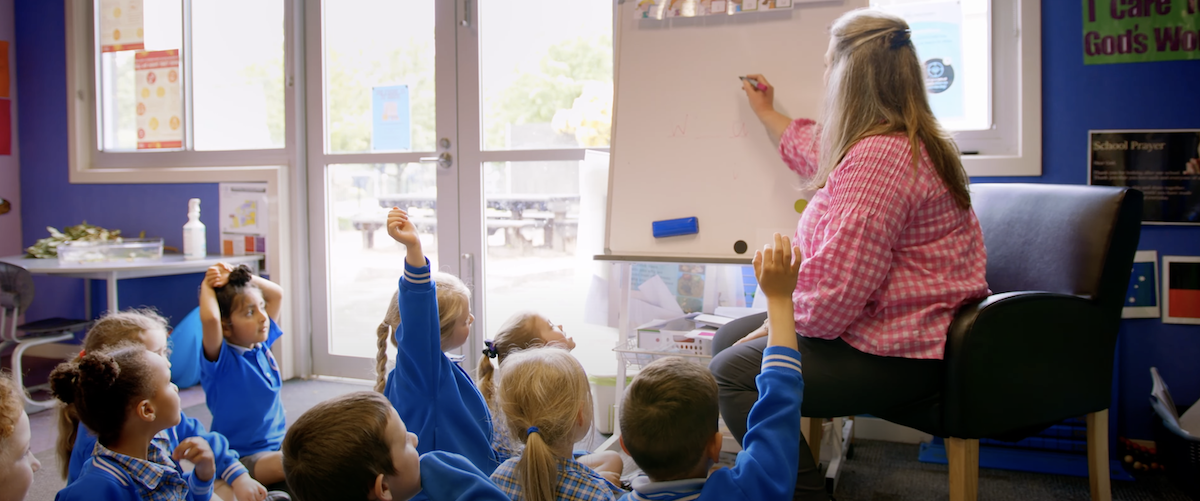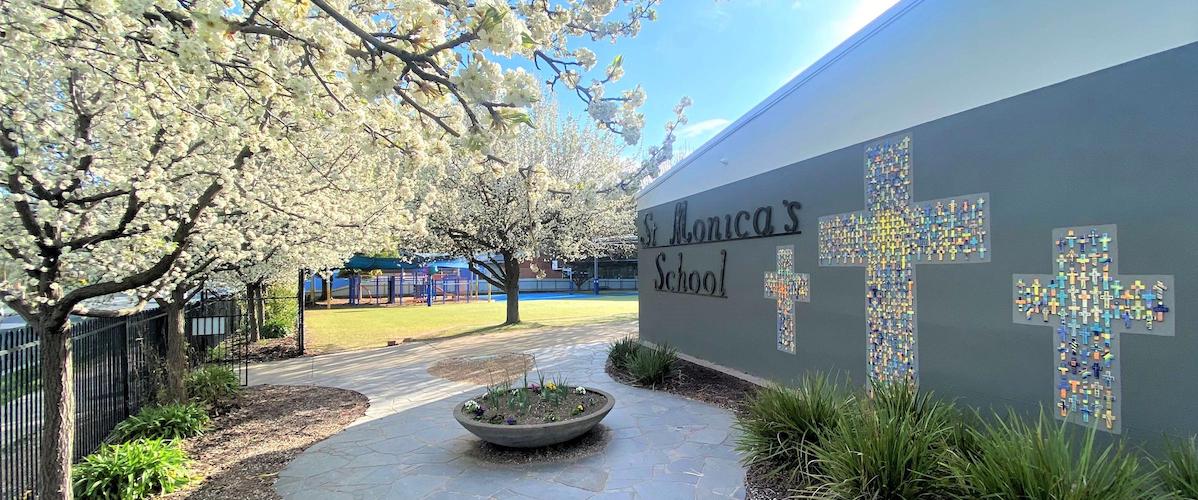RATIONALE:
All children have a right to feel safe and to be safe. As teachers, we have a legal and moral responsibility to respond to serious incidences involving abuse and neglect of the children with whom we have contact, and to report instances that involve physical, emotional, psychological, sexual abuse or neglect.
The dignity of the human person, who is created in the image and likeness of God, is the foundation of Catholic Social Teaching. This Catholic anthropology leads us to afford all people, but especially children, young people and the most vulnerable, the highest respect. Within this context, effective Catholic schools provide a safe, supportive and secure environment that promotes respect and care and values diversity. The mental, physical, spiritual and emotional wellbeing of children and young people are essential preconditions for successful learning. These qualities cannot be developed for individuals in isolation from the health and wellbeing of the school community as a whole.
Saint Monica’s is committed to the creation of a safe, just and respectful environment that supports wellness for all members of the school community. In this, there is a moral obligation and shared responsibility to protect the most vulnerable members of the community.
Saint Monica’s believes that, while protecting children and young people against sexual abuse is a community wide responsibility, schools have particular moral and legal responsibilities to ensure children and young people are safe in their care and to actively and intentionally work to eliminate all forms of abusive behaviors towards children. There are also particular moral and legal obligations for those in authority to prevent, reduce and minimize child abuse and exploitation in all forms.
AIMS:
This policy applies to the whole school community in supporting safe environments for all children and young people.
It concerns the new criminal offence under the Victorian Crimes Act, introduced in 2014, of ‘failure to protect’, which provides that a person who:
- by reason of the position the person occupies within a relevant organisation, has the power or responsibility to reduce or remove a substantial risk that a relevant child will become the victim of a sexual offence committed by a person of or over the age of 18 years who is associated with the relevant organisation; and
- knows that there is a substantial risk that the person will commit a sexual offence against a relevant child – must not negligently fail to reduce or remove that risk.
Note: In determining whether an offence of ‘failure to protect’ has taken place it is not necessary to prove that a sexual offence was committed.
The offence applies only to adults in a position of authority within an organisation, including roles such as, but not limited to, canonical administrators, principals, senior school leaders, business managers.
This policy is enacted tosustain child safe schools, to inform all those occupying such positions are aware that they may be subject to the criminal offence of ‘failure to protect’ if they negligently fail to reduce or remove risks to children associated with that organisation, and to provide guidance in fulfilling their responsibilities.
KEY PRINCIPLES
- A safe environment is required to protect children and young people from harm and to prevent staff from abusing their position of authority and trust.
- The child and young person's ongoing safety and wellbeing must be the primary focus of all decision making.
- School leaders and staff must be fully self-aware of, and comply with, their professional obligations and responsibilities.
- The commitment to protecting children is embedded in the organization’s culture and responsibility for taking action is understood and accepted at all levels of the organization.
DEFINITIONS:
Child and Young Person
A child is legally defined as a person under the age of 16 years. A young person is any person who comes under or may come under the care, supervision or authority of the school.
Person in authority
A person in authority is someone who, by reason of their position within a relevant organisation, has the power or responsibility to reduce or remove a substantial risk that a child under the age of 16 years, who is under their care, supervision or authority, may become the victim of sexual abuse committed by an adult associated with the organisation. The role may be a formal, management role but may also apply to less formal roles such as a volunteer coach for a sports team.
Reasonable belief
A ‘reasonable belief’ is formed if a reasonable person in the same position would have formed the belief on the same grounds. A ‘reasonable belief’ is not the same as having proof.
Sexual abuse
Sexual abuse occurs when a person uses power or authority over a child to involve the child in sexual activity and the child's parent or caregiver has not protected the child. Physical force is sometimes involved. Child sexual abuse involves a wide range of sexual activity, including physical activity and/or exposure of the child to pornography.
IMPLEMENTATION:
This policy applies to the community of Saint Monica’s in supporting a safe environment for all children and young people.
It applies to all persons in positions of authority, to understand their role and responsibility on protecting the safety and wellbeing of children and young people.
The successful implementation of this policy will result in Saint Monica’s having integrated the following into its policies, procedures, practices, and routines:
- This policy and its requirements will be communicated annually to senior staff
- This policy and its requirements will be communicated to new leaders during induction
- Prompt and full responses to any allegations will be undertaken, with well documented records retained securely and confidentially
RELATED DOCUMENTATION:
This policy should be read in conjunction with the other policies and procedures of Saint Monica’s concerned with Child Safety and Pastoral Wellbeing:
- Charter of Sandhurst School Improvement
- Child Protection and Safety Policy
- Child Protection – Mandatory Reporting Policy
- Child protection – Working With Children Checks Policy
- Child Protection – Failure to Disclose Policy
- Child Protection – Grooming Policy
- Catholic Education Sandhurst Information for Schools – Child Safe Organisations
REFERENCES:
- Crimes Amendment (Protection of Children) Act 2014, online, http://www.austlii.edu.au/au/legis/vic/num_act/caoca201436o2014417
- Children, Youth and Families Act (Vic) 2005
- Victorian Parliamentary Inquiry into the Handling of Child Sexual Abuse by Religious and Other Non-Government Organisations, Final Report, Betrayal of Trust, November 2013.
- Integrity in the Service of the Church, online https://www.catholic.org.au/documents/1345-integrity-in-service-of-the-church-1
REVIEW:
This policy is to be reviewed at least every three years.
Initially Ratified: 2016
Next Review to be completed by: 2021





